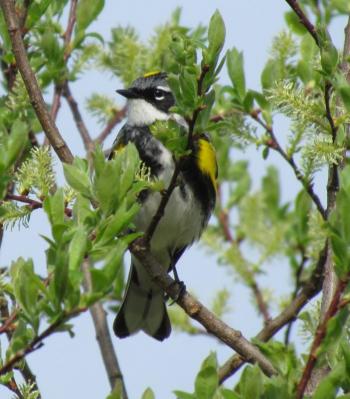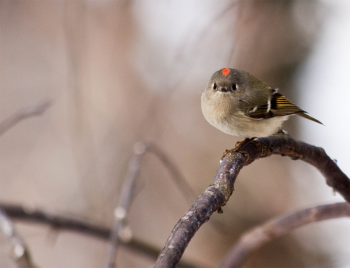Birding in Ways We Never Expected
We had some interesting virtual birding experiences this past week that we can say with certainty we’d never had before! One morning we participated in a special Birding Buddy project that was set up through a National Audubon Society program to help students in a college environmental studies class. The professor had originally planned on taking the entire class out for a birding excursion together to learn more about birds and how to identify them. The idea was to help them participate in the activity of birding. Of course, that idea was scrubbed when all classes had to go online due to the coronavirus and the students had to go home. Now scattered across the country, how could they enjoy a birding experience?
The solution: pair each student with a birder and create a virtual birding experience together online. That’s what we did for about 45 minutes one morning last week with a student from Maine. We set things up so we could watch our own feeder together online and talked about the birds we were hearing and seeing together, despite being situated about 100 miles apart! The student was completely new to birding so the chickadees and blue jays and house sparrows were all fresh and exciting to learn about. We never would have imagined trying something like that even just a few months ago. It was quite fun to share our birds this way!
Another first for us last week was giving a Zoom webinar presentation and discussion about Maine birds, hosted by the Natural Resources Council of Maine. From our kitchen table (carefully orchestrated to avoid showing any clutter!), we shared via computer presentation slides of beautiful Maine birds, along with some bird vocalizations and videos, too. Thanks to the latest technology, we were able to engage the 150 or so participants by asking fun poll questions (Common Loon was voted favorite bird in one poll), and we enjoyed answering lots of interesting queries as well. It was nice to just feel like we were hanging out with a wonderful group of people who love birds, even if we each were scattered around in our own homes across the state and the nation.
We’ve been interested to follow online what some of our friends and fellow bird lovers have been reporting from far to the north in the Northwest Territories, a few thousand miles away. For them the first birds of spring are species like crows, gulls, eagles, snow buntings, and redpolls! And around Yellowknife, the capital of the Northwest Territories, folks are lucky enough to be seeing lots of great gray owls while the flocks of pure-white willow ptarmigan that spent the winter are starting to disperse.
We did some of our own backyard birding, too, in between all these virtual experiences. We finally had a newly arriving yellow-rumped warbler appear, but it was a quick glance as it flew over the house one morning, giving its distinctive “chuck” call. A few ruby-crowned kinglets were more generous of their time with us. One of these tiny greenish sprites, their bold white-eye rings giving them an inquisitive appearance, sang its loud, rollicking song from the neighbor’s cedar tree one morning. Another foraged for insects in the yet-to-flower forsythias and lilacs just yards away from us one early evening. Incredible how these tiny birds never seem to stop moving.
Over the weekend while doing yard work we glanced up to see a low-flying broad-winged hawk showing off its black-and-white striped tail as it glided over the house. Chipping sparrows have finally showed up and begun singing their dry trills throughout the neighborhood while the other trillers, the dark-eyed juncos, have left for summer quarters. We probably won’t see those again in our yard until next October, although they do breed through much of the state and probably only a few miles away in some cool hemlock-lined ravine.
May your birds and birding be wonderful whether virtual or in real-life. Stay safe and healthy!
For interested online readers, here is a link to a video of the virtual presentation we did last week: https://www.youtube.com/watch?v=fiqKTJ-0UZU&feature=youtu.be
Jeffrey V. Wells, Ph.D., is a Fellow of the Cornell Lab of Ornithology and Vice President of Boreal Conservation for National Audubon. Dr. Wells is one of the nation's leading bird experts and conservation biologists and author of the “Birder’s Conservation Handbook.” His grandfather, the late John Chase, was a columnist for the Boothbay Register for many years. Allison Childs Wells, formerly of the Cornell Lab of Ornithology, is a senior director at the Natural Resources Council of Maine, a nonprofit membership organization working statewide to protect the nature of Maine. Both are widely published natural history writers and are the authors of the popular book, “Maine’s Favorite Birds” (Tilbury House) and “Birds of Aruba, Bonaire, and Curaçao: A Site and Field Guide,” (Cornell University Press).

























